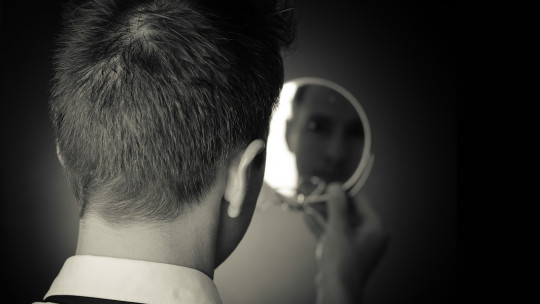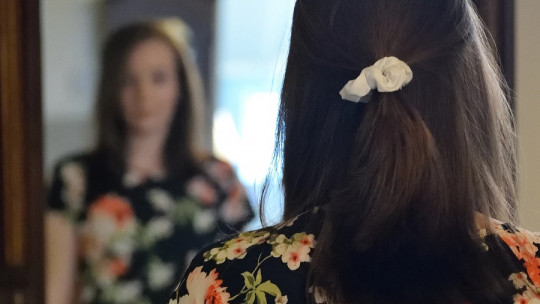
There are many types of phobia that we have talked about in Psychology and Mind, some very rare or strange, such as trypophobia. Phobias share many symptoms in common and are quite common anxiety disorders.
All human beings can feel fear, which is an adaptive emotion that has allowed the human species to survive over the centuries. Now, this adaptive emotion can become a situation that produces great discomfort and even irrational terror in the face of some stimuli that are not dangerous at all.
In fact, one of these phobias is catoptrophobia or eisoptrophobia. The irrational fear of something as everyday as looking in the mirror.
The fear of mirrors, what is it about?
Fear of mirrors or catoptrophobia It is a specific phobia that belongs to the group of anxiety disorders, since its characteristic symptom is the discomfort and great anxiety that people with phobia suffer. Within phobic disorders there are three groups: social phobia, agoraphobia or specific phobias. Regarding this last case. They appear in the presence of some specific objects or situations, such as spiders (arachnophobia), flying in an airplane (aerophobia) or, in this case, the presence of mirrors or the fact of looking in them.
Phobias cause the person who suffers from them to try to avoid the feared situation or object and, for example, not go to places where they may encounter phobic stimuli, something that can alter the normality of their life. Perhaps in the case of fear of mirrors, this pathology rarely affects the person’s life in a very negative way except for the discomfort it causes, unlike other phobias such as claustrophobia, that the patient is unable to get on transportation. public to go to work, thus making their work and social life difficult.
However, It may happen that these people avoid, for example, going to their friends’ houses so as not to have to face the fear. We must not forget that mirrors are quite common objects, and discomfort can occur at any time, unlike other phobias in which the person very rarely comes into contact with the phobic stimulus, such as snakes.
Sometimes, catoptrophobia can be confused with spectrophobia, which is the fear of the existence or appearance of ghosts or spirits, since people with this phobic disorder may be afraid of seeing their own reflection in the mirror and think that the figure may come out. of said object.
What causes catoptrophobia?
Phobias can have different causes; however, Most experts agree that irrational fears are learned. Until just a few decades ago, the belief was that phobias were genetically inherited, but this view changed following research into classical conditioning, a type of associative learning originally discovered by a Russian physiologist named Ivan Pavlov.
This character intended to experiment with the dogs’ saliva and that is why he brought them food. Well, dogs salivate when they are going to eat to facilitate the digestion process. Pavlov realized that at first the dogs salivated in the presence of food, but that after several trials, the mere presence of the researcher caused the dogs to salivate even without the food being present. This meant that the dogs had associated Pavlov’s presence with food and, therefore, the scientist provoked the response that was originally provoked by food alone.
Learning fear in humans
Pavlov’s experiments were the beginning of a new paradigm in Psychology: Behaviorism. But this trend did not become popular until John B. Watson popularized it in the United States and, as a consequence, in the world. Watson experimented with a small child to make him afraid of certain stimuli, that is, it caused a phobia. This study is one of the most controversial in psychology, and is called the “Little Albert experiment.”
In addition to this theory, another hypothesis that is being considered regarding the origin of phobias is that some stimuli are more likely to be learned because we are biologically prepared for it to avoid the disappearance of our species. For this reason, when we learn something, mechanisms are produced that have little to do with reason and logic, and that is why it is difficult to overcome a phobia even though we are aware that the fear is irrational.
On the other hand, this phobia can develop due to superstition or false beliefs, since there is a popular belief that breaking a mirror means that bad luck will accompany us for seven years.
Symptoms of catoptrophobia
The symptoms of different types of phobias, whether specific or complex (social phobia and agoraphobia), are common among them. Anxiety is undoubtedly the most characteristic feature, which is accompanied by great discomfort and an attempt to avoid mirrors. The person may experience the phobia when seeing mirrors or seeing the image of themselves in the mirrors.
In general, there are three types of symptoms of catoptrophobia:
How to overcome this phobia
Fortunately, Phobias have a cure, and psychological treatment works very well for this type of disorder. Since its origin is learned, Cognitive Behavioral Therapy has proven to be effective and the prognosis for patients’ recovery is very good.
Within this type of therapy, some methods such as relaxation techniques or exposure techniques are frequently used. A widely used type of exposure technique is systematic desensitization, which consists of gradually exposing the patient to the phobic stimulus while learning more adaptive coping strategies. For example, it is possible to start by showing the patient images of some mirrors, and at the end of the therapy he is able to take a mirror with his own hands and look in it without any fear.
Now, this type of therapy, which works so well, belongs to the second generation therapies, but the third generation therapies, which are more recent, have also been shown to be effective for any anxiety disorder. Among the latter, the following stand out: Mindfulness-Based Cognitive Therapy and Acceptance and Commitment Therapy.
In extreme cases, pharmacological treatment is also a therapeutic action to consider, but it must always be combined with psychotherapy so that the symptoms are maintained over time.








